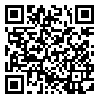Volume 17, Issue 3 (2014)
mjms 2014, 17(3): 105-117 |
Back to browse issues page
Download citation:
BibTeX | RIS | EndNote | Medlars | ProCite | Reference Manager | RefWorks
Send citation to:



BibTeX | RIS | EndNote | Medlars | ProCite | Reference Manager | RefWorks
Send citation to:
Malakoutian M, Mirzadeh-Azad F, Naeli P, Foaani Y, Mowla S J. A Long Non-coding RNA, PSORS1C3, Located Upstream of the Human Oct4 Gene is Expressed in Pluripotent and Tumor Cell Lines. mjms 2014; 17 (3) :105-117
URL: http://mjms.modares.ac.ir/article-30-7200-en.html
URL: http://mjms.modares.ac.ir/article-30-7200-en.html
Mahshid Malakoutian1  , Fatemeh Mirzadeh-Azad1
, Fatemeh Mirzadeh-Azad1  , Parisa Naeli1
, Parisa Naeli1  , Yousef Foaani1
, Yousef Foaani1  , Seyed Javad Mowla
, Seyed Javad Mowla  1
1
 , Fatemeh Mirzadeh-Azad1
, Fatemeh Mirzadeh-Azad1  , Parisa Naeli1
, Parisa Naeli1  , Yousef Foaani1
, Yousef Foaani1  , Seyed Javad Mowla
, Seyed Javad Mowla  1
1
1- Department of Genetics, Faculty of Biological Sciences, Tarbiat Modares University, Tehran, Iran
Abstract: (6519 Views)
Objectives: Long non-coding RNAs (lncRNAs), a vast class of recently discovered non-coding genes in the human genome, have been implicated in the regulation of several biological processes, including the maintenance of stem cell pluripotency and neurogenesis. New evidences have emerged that some long IncRNAs act as enhancers for their neighboring genes. Oct4, also known as POU5F1 and Oct3/4, functions as a master regulator in maintaining the properties of pluripotency and self-renewal of embryonic stem (ES) cells and embryonal carcinoma (EC) cells. Oct-4 expression must be tightly regulated; too much or too little expression can lead to cell differentiation. Methods: PSORS1C3, an IncRNA, is located upstream of the Oct4 gene. This IncRNA could potentially impact the level of Oct4 expression. Here, we have investigated potential expression of PSORS1C3 on 23 different human pluripotent and cancer cell lines by means of RT-PCR. Results: Our results revealed a noticeable expression of PSORS1C3 both in a well-known pluripotent cell line (NTera2/NT2) and five different cancer cell lines (AGS, 5637, Ht-29, HepG2 and PC3). Conclusion: We detected the expression of PSORS1C3 for the first time in both cancer cell lines and stem cells.
Article Type: Short Comunication |
Subject:
Human Genetics|Medical Genetics|Molecular Genetics|Molecular Biology|Cancer|Stem Cells
Received: 2014/07/2 | Accepted: 2014/07/16
Received: 2014/07/2 | Accepted: 2014/07/16
| Rights and permissions | |
 |
This work is licensed under a Creative Commons Attribution-NonCommercial 4.0 International License. |






